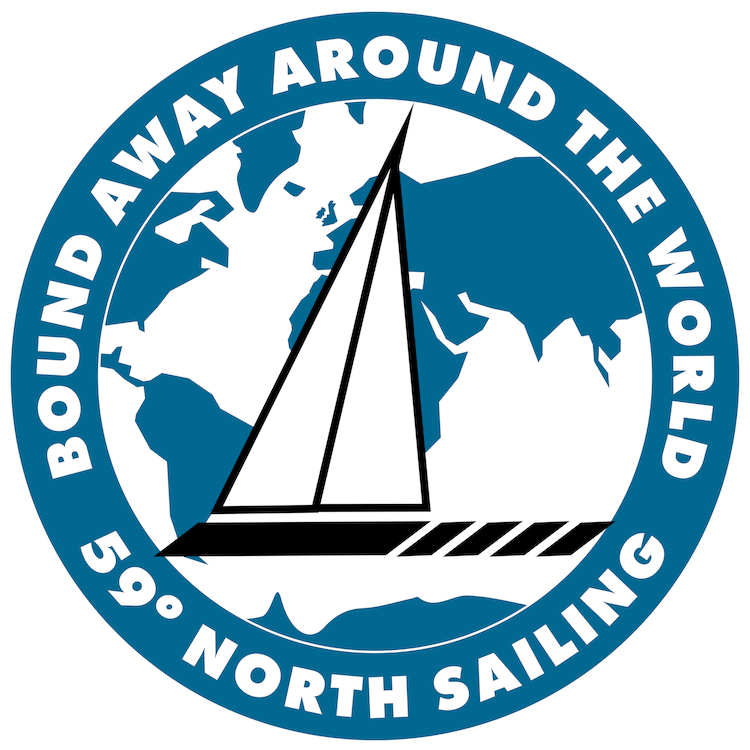Pretty damn good forecast for an east-west trans-Atlantic!
T-minus 5 hours until departure. This will be our longest passage to date on ISBJORN, and the longest, mileage wise, of my entire sailing career. It’ll be Mia’s 5th trans-Atlantic, my 4th, and the 1st for the four crew - David, Walter, Etta & Fred - that joined us in Las Palmas two days ago for the voyage to Antigua. As I write it’s 8:10am, Mia’s making breakfast, the crew is stretching their legs one last time ashore in search of a shower, and I’m about to make the long walk down to the border police at the other end of the harbor to clear us out of Spain.
Back in 2011 Mia and I completed our first Atlantic crossing on ARCTURUS, our 35-foot Allied Seabreeze yawl, taking 23 days in August to sail from St. Pierre, just south of Newfoundland, to Crookhaven, at the southern tip of Ireland and just inside the famous Fastnet Rock. That passage was only a touch over 2,000 miles, but we had exceptionally calm weather and ARCTURUS only averaged 96 miles per day. I’m very much hoping that this trip, while longer in nautical miles, is shorter in duration!
How do YOU stay fit offshore? Here's Mia being a badass on our last trans-Atlantic in 2017, getting in her astronaut pushups while a BIG 10-15-foot sea was running in about 30-35 knots of wind.
We spent extra time on the chartplotting exercise yesterday. On a passage this long, the projection of the chart matters. On the familiar Mercator projection, which makes the round earth appear flat, great circle routes - that is, the shortest distance between two points on a round object - appear as curved lines. Meaning, in order to actually follow a great circle course in practice, the ship’s compass course will change over the duration of the voyage.
Plotting on the flat, Mercator projection.
However, to PLOT a great circle route properly on a chart, you need a special projection. We used IMRAY’s chart 100 of the North Atlantic. On that chart, straight lines represent great circle routes…but since latitude and longitude lines appear curved, you can’t plot a compass course off of this. (Incidentally, IMRAY’s series of IOLAIRE charts are by far my favorite. The venerable Don Street helped create these, and on the BACKS of each chart, are wonderful sailing directions and local information, mainly for the Caribbean and Atlantic Islands. On Chart 100, the trans-at chart, Don lists all the common routes right on the front, and has printed pilot charts showing winds, currents and ice on the back. They are great).
Setting up the plotting sheet for our stretch of ocean, using the longitude scale.
So bringing it all together, the crew yesterday used both chart projections AND something called a universal plotting sheet, which is commonly used in celestial navigation, to create the route across the pond. They first plotted the great circle route on the IMRAY chart, picked off waypoints every 4 degrees of longitude and then transferred them onto the flat Mercator chart to get the correct compass course for each leg. THEN we created a series of plotting sheets, each good for about 300 miles of ocean, or 1 ½ - 2 days of sailing. These we’ll use to plot the position after each 4-hour watch shift - plot this on the big passage chart and it’ll simply be too cluttered. Once a day, at noon, we’ll transfer the position to the big passage chart, keeping it nice and clean and allowing us to calculate our 24-hour run.
Finally, after layering the weather forecast on top of this, we did the whole process again, electing to follow the classic “sail south til the butter melts” route instead of the more northerly - but shorter - great circle rhumb line route.
IMRAY’s chart 100, with pilot charts for the North Atlantic printed on the back, with Don Street’s sailing directions.
I’m a late sleeper and never like rushing into an offshore passage. A few hours will make no difference in a nearly 3,000 mile passage, so we’ll leave this morning when we’re ready to. I went up the rig yesterday to check her out and replace the black wire ties keeping the shackles from unscrewing. The crew will complete the rest of the pre-departure checklist this morning after breakfast, and if I’m lucky, I’ll have time to hit the gym one last time after visiting the border police.
ISBJORN in full flight on the big blue.
And then, after lunch, we’ll set out across the big blue. There is a ‘blood moon’ early Sunday morning - a full lunar eclipse, which will be visible to us offshore - and I’m taking that as a very good omen as we head to sea again.
It’ll be three weeks again until you hear from us on this blog. Our apprentice Ben will be updating our Instagram account with some fun stories from previous Atlantic crossings, and of course you can track our progress at 59-north.com/track. The map will show there, and if you click on the track, you’ll be able to see some short text updates we can send it over the Iridium system.
I have to say I’m really looking forward to this passage.


